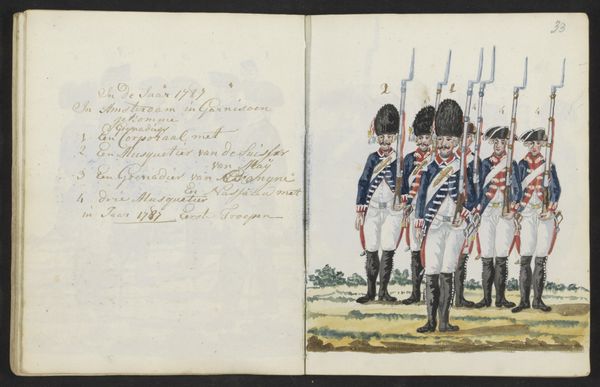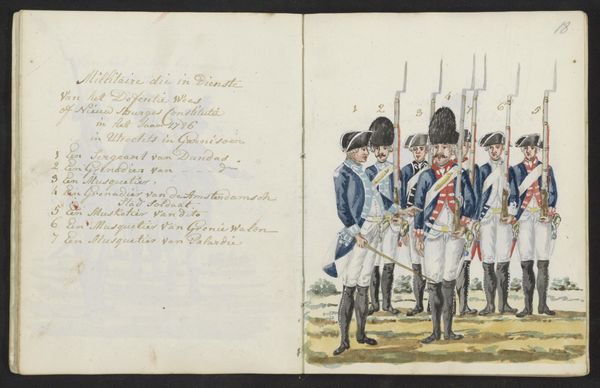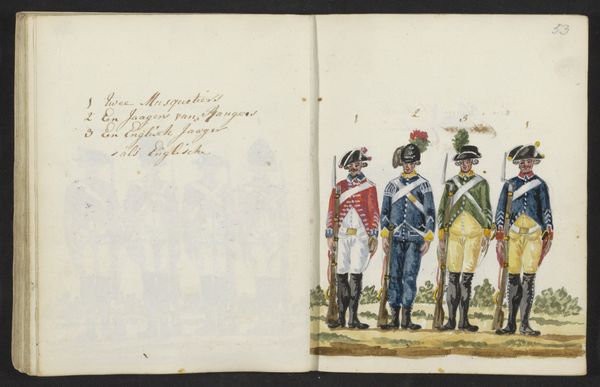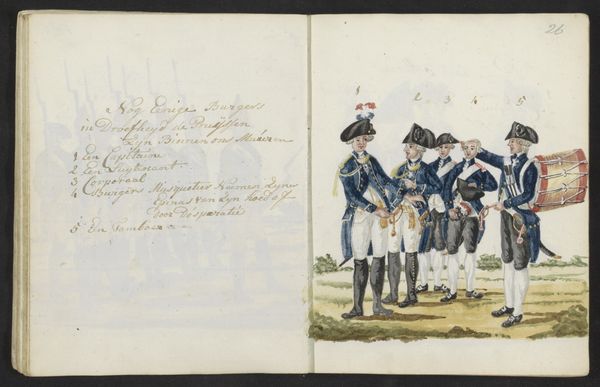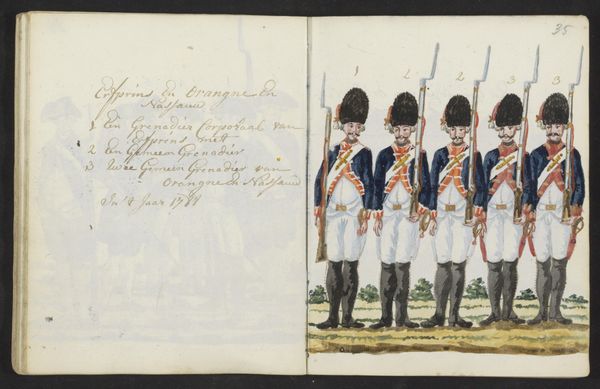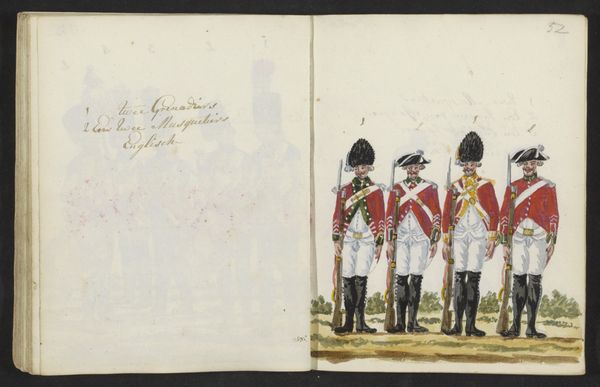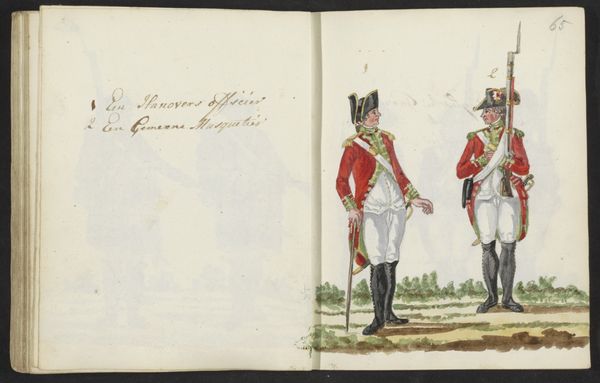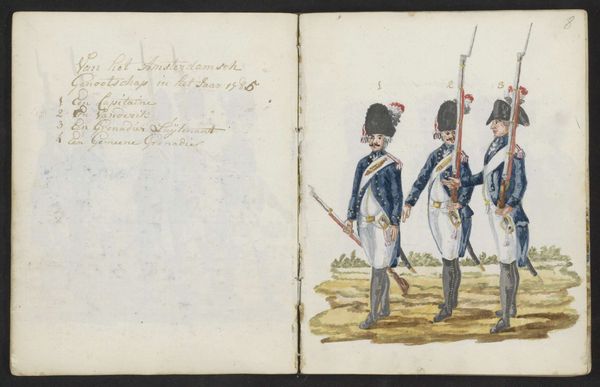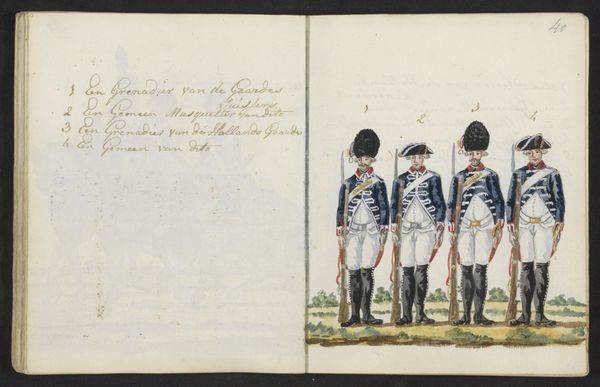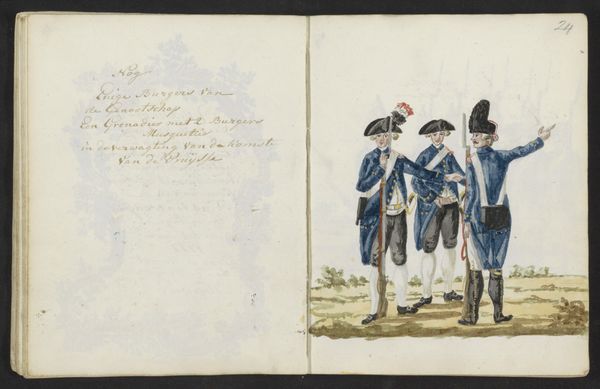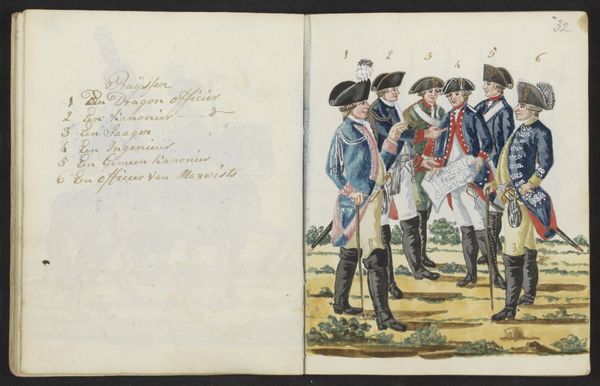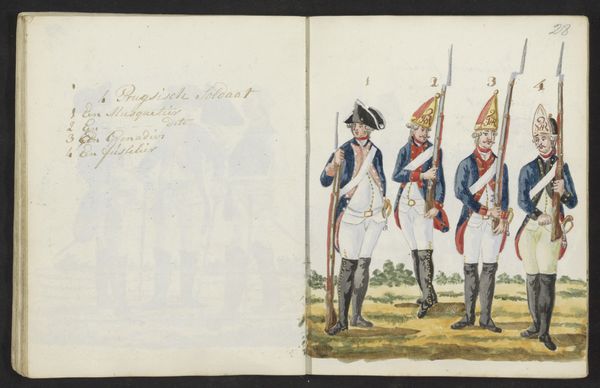
drawing, paper, watercolor
#
portrait
#
drawing
#
paper
#
watercolor
#
coloured pencil
#
watercolour illustration
#
history-painting
Dimensions: height 197 mm, width 310 mm
Copyright: Rijks Museum: Open Domain
Editor: Here we have “Uniform van Engelse troepen,” or "Uniform of English Troops," a watercolor and ink drawing on paper from 1795-1796 by S.G. Casten. The figures are so precise, yet there is something unfinished about the open sketchbook. What stands out to you? Curator: What fascinates me is the rendering of these uniforms as signifiers. Notice how meticulously the artist has detailed the buttons, the lace, the cut of the coats. Each element speaks volumes. What do these uniforms communicate about the wearers, about the nation they represent? Editor: I suppose they’re supposed to project order and strength. I see rank and duty, maybe even a little intimidation. The way they carry themselves is quite formal. Curator: Precisely. The colors, the specific patterns—they function almost as a visual language. Red, for example, often signifies courage or sacrifice, drawing on centuries of symbolic usage in military contexts. Consider, too, how these uniforms would have been perceived by different audiences: by fellow soldiers, by enemies, by civilians. How do these symbols change with context? Editor: That’s interesting to think about. I never considered how loaded a simple color could be. And what about the shakos? Does their shape denote meaning? Curator: Absolutely. Think about the materials, the decorations – each carries meaning, contributing to an overall impression of power, discipline, and national identity. The towering height of the grenadier’s hat was meant to make an imposing impression, signaling superiority. But also consider, the artist is copying; how much individual character can the officer have while wearing this uniform? Is identity consumed by this public symbol? Editor: That makes me wonder if people saw uniforms differently then. We're so used to everyone expressing themselves individually through clothing now. Curator: Indeed. What we might perceive as conformity, they saw as a symbol of unity and allegiance. The drawing now shows how meanings are fluid, shifting over time, and within cultural settings. I never thought about military clothing holding such complex significance! Editor: Me neither! Thank you for your illuminating interpretation.
Comments
No comments
Be the first to comment and join the conversation on the ultimate creative platform.

